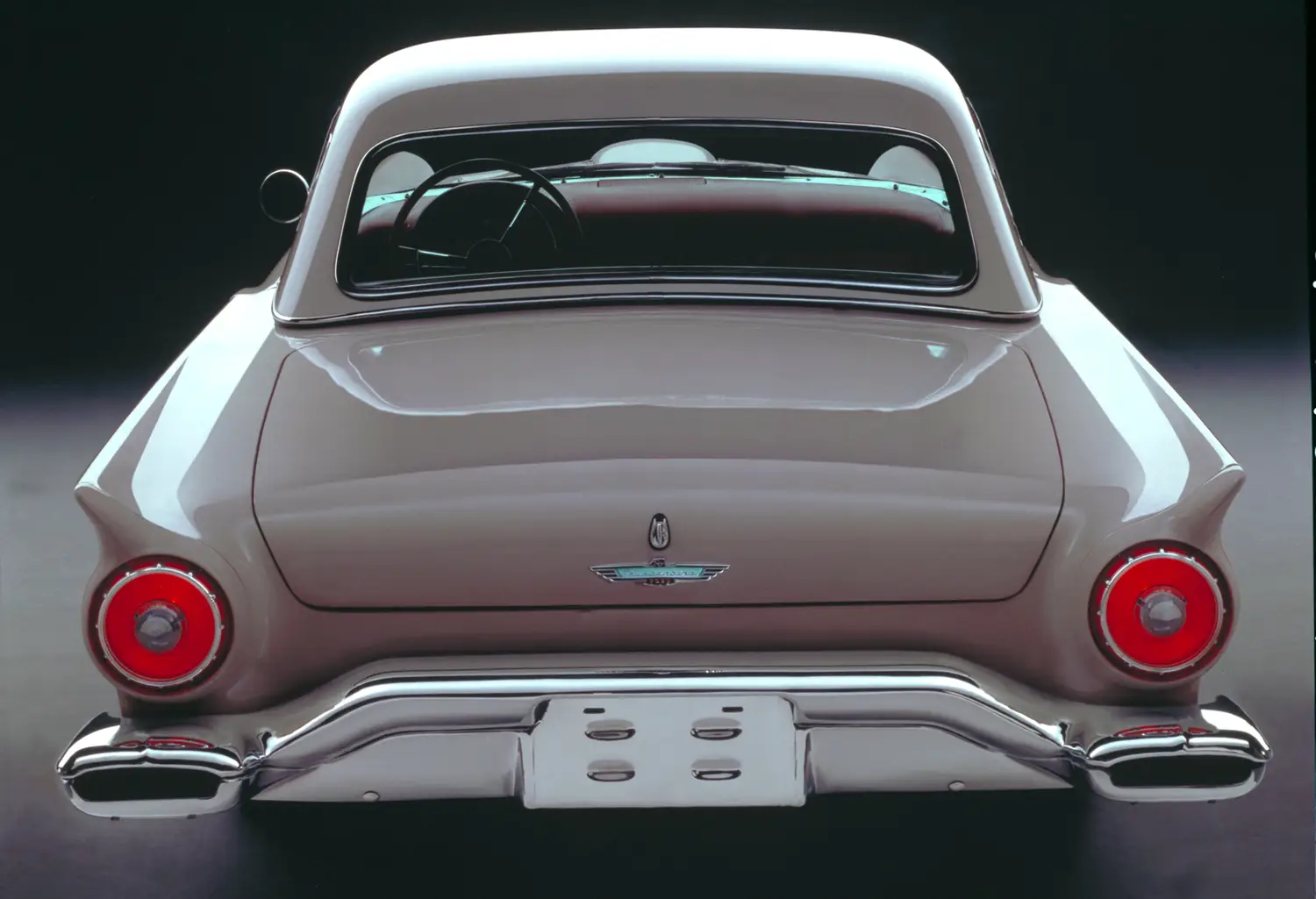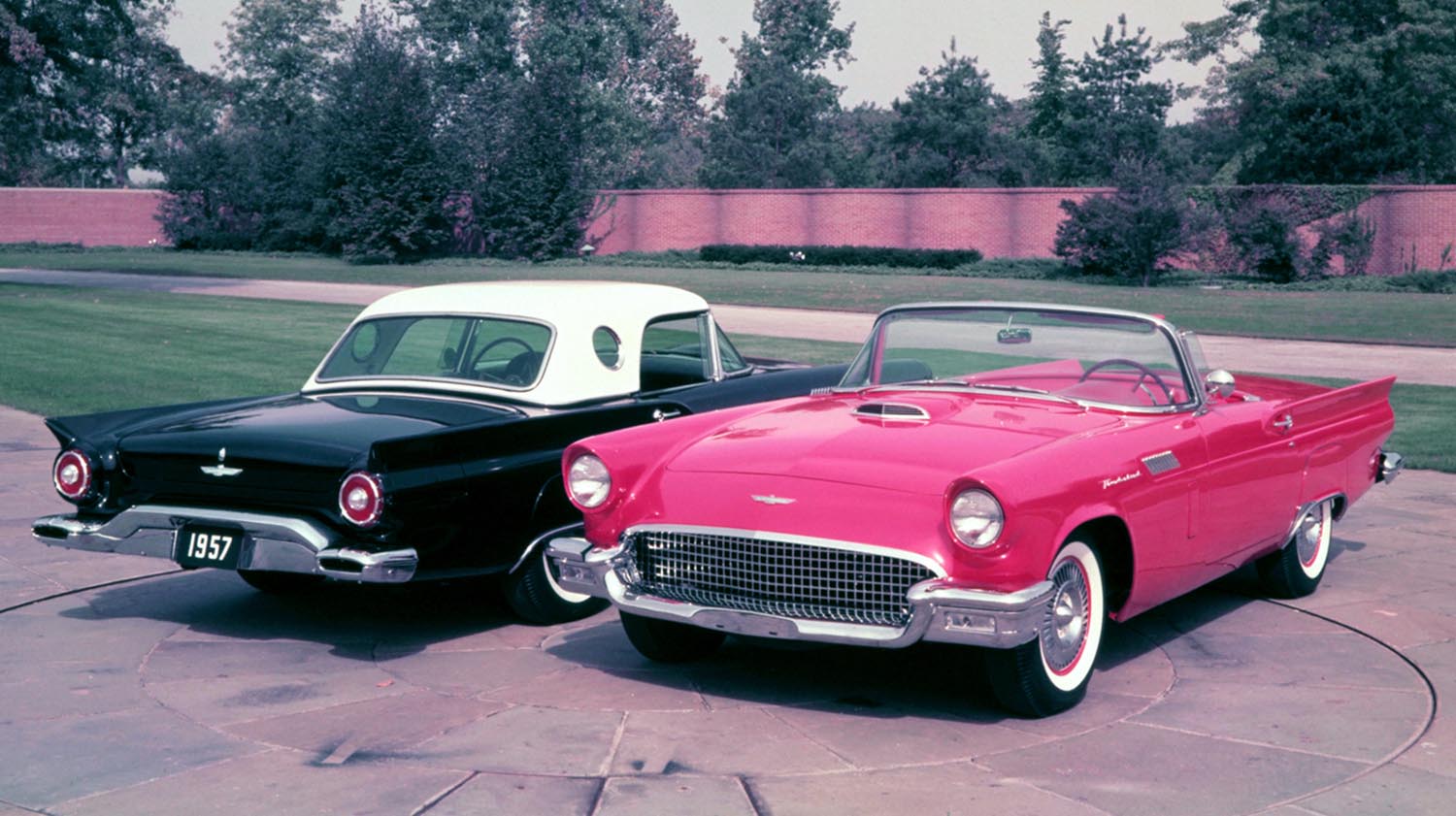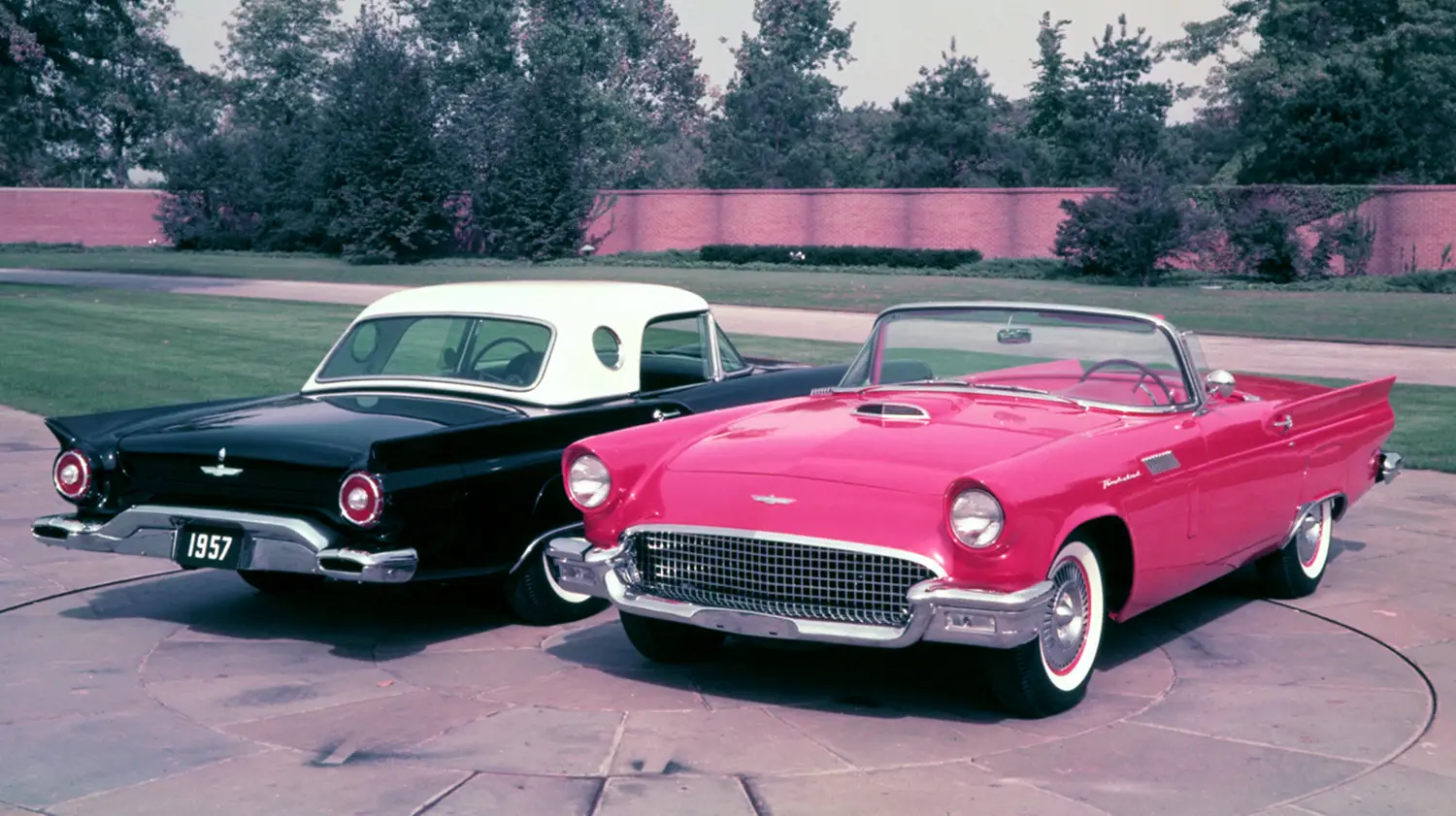
The 1957 Ford Thunderbird is a true American icon, representing the pinnacle of the first-generation two-seater design. It stands as the ultimate expression of the “Little Bird,” a car that completely redefined the personal luxury segment when it debuted. Its existence owes a direct debt to the competition, specifically the Chevrolet Corvette, but Ford wisely chose a different path. While the Corvette leaned into raw sports car austerity, the Thunderbird offered V8 power with style and comfort. This approach resonated deeply with the American public, instantly making the T-Bird a massive success story.
The Birth of the Personal Luxury Segment
Ford General Manager Lewis Crusoe conceived the original Thunderbird idea in the early 1950s. He noticed the post-war enthusiasm for sleek European two-seseaters and wanted an American competitor. Instead of building a stripped-down sports car, Ford’s designers focused on a high-end touring machine. The design borrowed components from existing Ford lines to keep costs reasonable, yet the final product looked completely bespoke. This strategic balance of luxury and attainability carved out a new niche in the market.
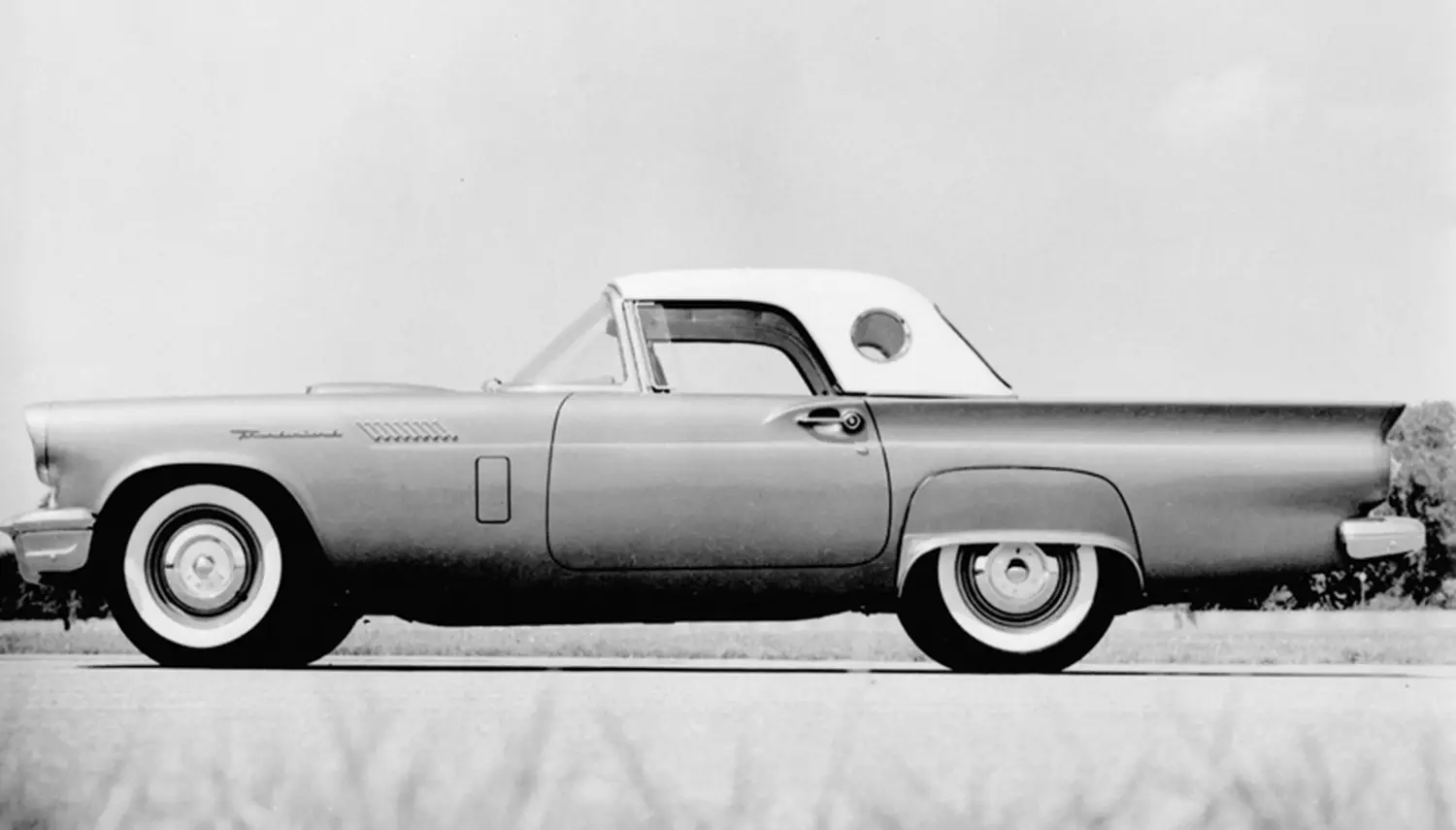
Refining the Iconic 1957 Design
The 1957 model year saw the most significant and final changes to the two-seater platform. This version is often considered the most desirable of the original generation. Its new look included a reshaped front bumper and a larger grille, giving it a more assertive face. Critically, the rear of the car was lengthened to finally move the spare tire back into the trunk. This simple change was much needed, tidying up the rear aesthetics and adding distinct, canted tailfins.
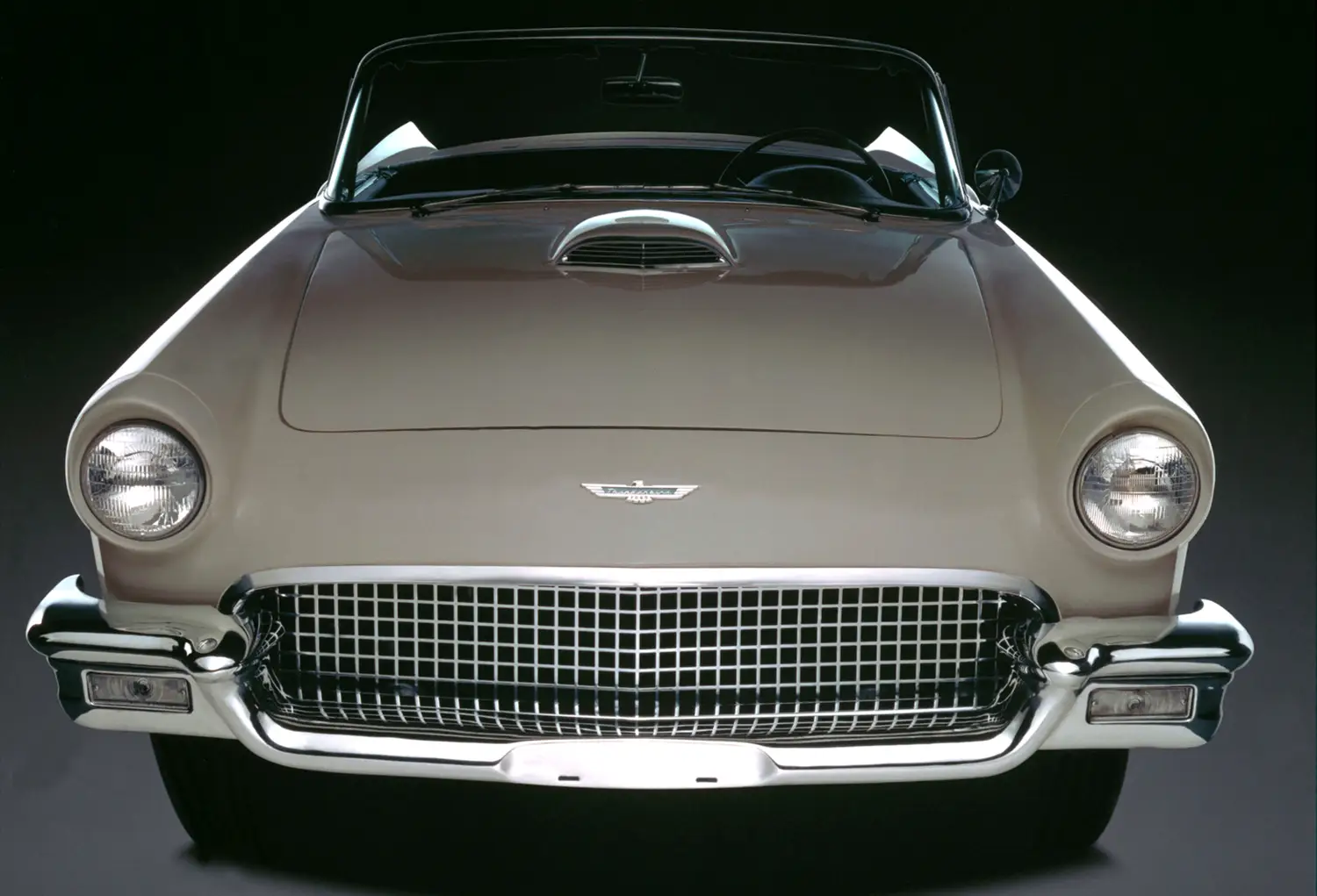
The Cabin: Style Meets Innovation
Inside the 1957 Ford Thunderbird, the atmosphere was clearly one of luxury and modern style. The dashboard received a significant overhaul, utilizing a more aggressive, engine-turned aluminum insert. Round gauges were housed in a single pod, creating a much sportier look than before. Ford also offered cutting-edge options for the era, further cementing its luxury appeal. For instance, the innovative Dial-O-Matic power seat featured a memory function.
Power and Performance of the ’57 Thunderbird
Under the hood, the 1957 Ford Thunderbird truly stepped up its game, offering a range of powerful V8 options. The standard engine was the 292-cubic-inch Y-block V8, but most buyers opted for the larger 312-cubic-inch unit.
The most potent options truly highlighted Ford’s engineering prowess at the time. The desirable “E-Code” V8 featured dual four-barrel carburetors, boosting output to 270 horsepower. However, the legendary “F-Code” version, equipped with a McCulloch/Paxton centrifugal supercharger, delivered a factory-rated 300 horsepower. This incredible performance package was a clear nod to the ongoing horsepower wars and the desire for NASCAR dominance. The car’s power was channeled through either a three-speed manual, an optional overdrive manual, or the Ford-O-Matic automatic transmission.
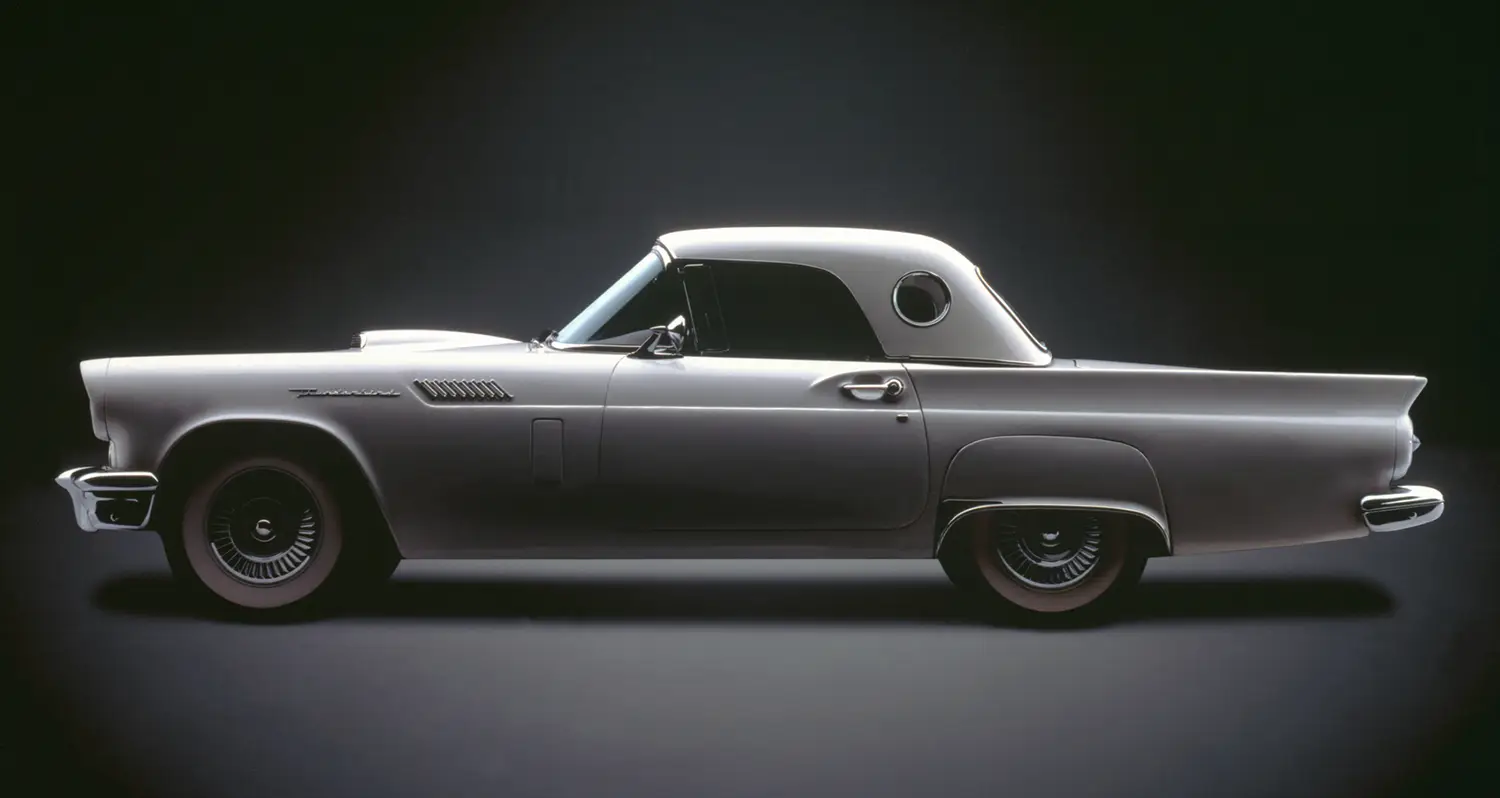
The Enduring Legacy of the Two-Seater T-Bird
Despite its massive success and widespread adoration, the two-seat 1957 Ford Thunderbird was the last of its kind for decades. Ford executives, most notably Robert McNamara, believed the limited seating capacity constrained sales. Therefore, the Thunderbird would transition to a larger, four-seat design for 1958. This decision proved financially sound but ended the original concept. The first-generation T-Bird, particularly the refined 1957 model, remains a permanent fixture of 1950s Americana. Its sleek lines and powerful presence defined a generation of personal driving enjoyment and comfort.
Disclaimer: Content on this site is for informational purposes only. Vehicle specs, pricing, and availability may change. Always verify details with official sources before making decisions. Opinions are those of the authors.
Source: Ford Heritage Vault
